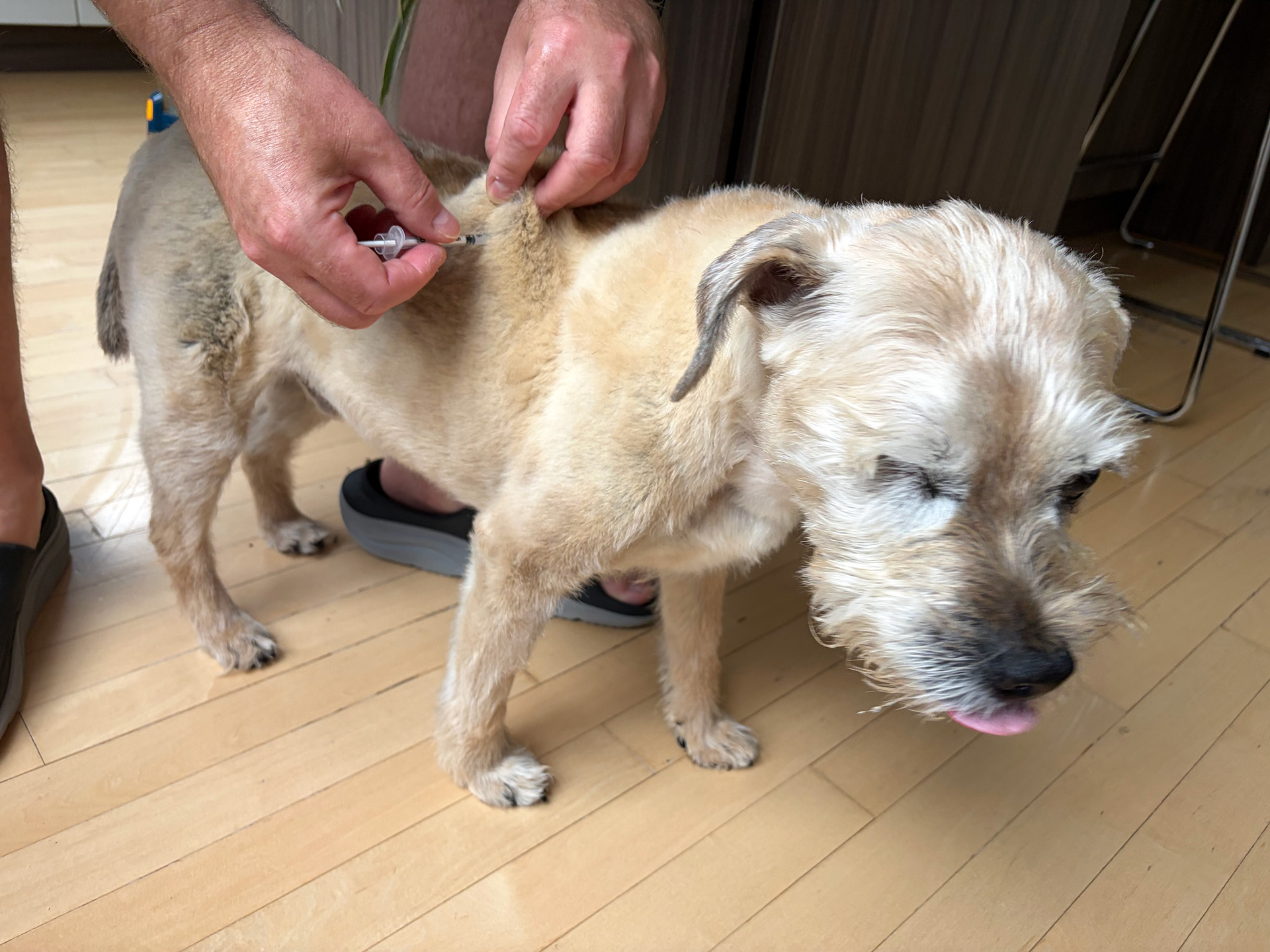September 8, 2025
5 minutes
Rob Hyams
October 8, 2025
10 minutes

When your dog is newly diagnosed with diabetes, giving insulin can feel overwhelming at first. Neither of us had handled needles before our boy Parker was diagnosed diabetic, so it was a whole new world of medical treatment that seemed daunting and challenging.
Don’t worry — with a little guidance and routine, it quickly becomes part of your daily care routine like brushing your teeth every morning.
Our first lesson on giving injections was late at night and left us confused and processing too much detailed information, so we put together this overview to help others and explain what you need to know about insulin, syringes, and giving injections safely and confidently.
These instructions apply if all of the following are true:
If your dog’s blood glucose reading is unusually low or if they refuse their meal, skip the insulin and contact your veterinarian before giving the next dose.
Insulin is usually given right after your dog finishes their meal, once you know they’ve eaten their full portion.
One of the most important things to know is that insulin and syringes are not all the same. Insulin for dogs comes in different strengths, which are measured in “units” (U). The two common types are:
Each type requires a matching syringe:
Using the wrong syringe type can result in giving too much or too little insulin, which can cause serious blood sugar swings.
When Parker was first diagnosed diabetic he was prescribed Vetsulin, but we switched to Humulin N about six months afterwards, which required different needles. So we had to dispose of the Vetsulin needles to avoid the risk of someone – such as a dogsitter – using them.
Always double-check the label on your insulin vial and syringe before every injection.
If you’re using insulin pens, follow your veterinarian’s instructions for attaching a new needle and priming before each dose.
Your veterinarian will tell you the exact dose your dog needs — for example, “6.0 units twice a day.”

Most diabetic dogs receive their insulin just under the skin (subcutaneous injection). Your vet or a technician will show you the best spot — often along your dog’s side or below the scruff area, where there’s a loose fold of skin.
If you smell insulin – it has a strong medicinal scent – or notice a wet spot on your dog’s fur, you may have given what’s called a ‘fur shot.’
It happens to everyone, especially if your dog has long or thick fur, or moves unexpectedly during the injection. Parker is a Terrier and despite his advanced age can still move quickly.
Do not give them another injection. You don’t know how much insulin they received and it’s riskier – possibly life-threatening – to give too much insulin than too little.
Keep insulin refrigerated, but not frozen. Avoid storing it in the fridge door, where temperatures fluctuate most. We use a plastic bento box which doesn’t get lost in our packed fridge and has a small compartment perfect for the vial.
Store syringes and supplies out of children’s reach.
Dispose of used syringes in a sealed sharps container or as directed by your local pharmacy or vet clinic. In Canada, many pharmacies like Shoppers Drug Mart provide sharps containers for free and accept full ones for safe disposal.
If anything looks unusual like redness at the injection site, loss of appetite, or unexpected blood sugar changes, let your vet know right away.
Your veterinarian is your best partner in managing insulin therapy. Ask them to watch you give an injection, confirm your technique, and check your supplies.
You’ve got this. Know that giving insulin is not just an act of life, it’s an act of love and care that keeps your diabetic dog healthy and happy every day.

We’re a couple of pet owners who’ve learned firsthand what it takes to care for a diabetic dog. When our own dog, Parker, was diagnosed, we were overwhelmed, so we built this site to make things a little clearer for others starting out. Everything here is designed to help you understand, plan, and feel more confident managing your dog’s diabetes.
September 8, 2025
5 minutes
September 26, 2025
8 minutes